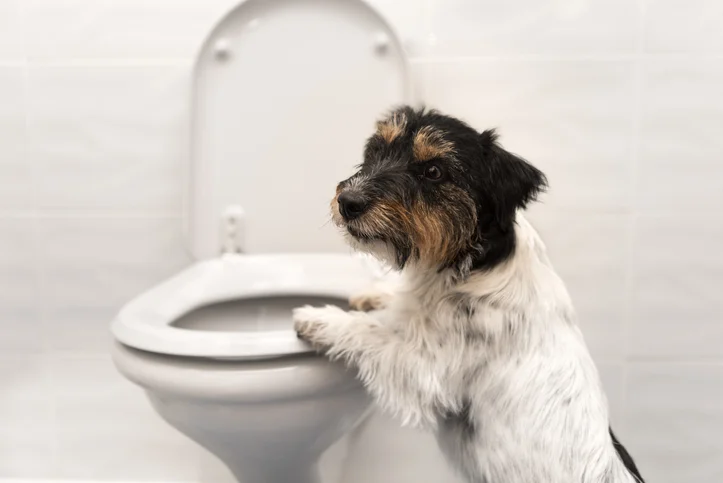An Hazards of Animal Waste in the Toilet
An Hazards of Animal Waste in the Toilet
Blog Article
Do you find yourself trying to locate information and facts concerning Don't Flush Your Pets Poo Down The Loo, Vet Warns?

When it involves dealing with waste, specifically animal waste, lots of people typically resort to the hassle-free choice of flushing it down the bathroom. However, this apparently simple remedy can have severe effects for the atmosphere and public health. In this post, we'll explore why flushing pet waste down the commode is a negative concept and offer alternate approaches for appropriate disposal.
Introduction
Correct waste disposal is essential for keeping ecological sustainability and public health. While it may appear harmless to flush animal waste down the commode, it can bring about different problems, both for the environment and human well-being.
Threats of flushing pet waste
Ecological effect
Flushing animal waste introduces dangerous bacteria and pathogens right into rivers, which can negatively impact water communities. These microorganisms can pollute water resources and injury aquatic life, interrupting delicate ecosystems.
Public health issues
Animal waste includes hazardous bacteria such as E. coli and Salmonella, which can pose major health risks to human beings. Purging animal waste down the bathroom can contaminate water supplies, leading to the spread of illness and infections.
Alternatives to flushing
Rather than flushing pet waste down the bathroom, there are numerous different disposal methods that are much more eco-friendly and hygienic.
Composting
Composting animal waste is an eco-friendly means to dispose of it. By composting, organic matter is broken down right into nutrient-rich soil, which can be used to feed yards and plants.
Landfill disposal
Disposing of animal waste in a land fill is an additional choice. While not as environmentally friendly as composting, it is a more secure choice to flushing, as it avoids the contamination of water resources.
Animal garbage disposal systems
There are customized family pet waste disposal systems offered that securely and hygienically throw away pet waste. These systems usually utilize enzymes to break down waste and eliminate smells.
Steps to appropriate pet waste disposal
To ensure correct disposal of animal waste, comply with these steps:
Scooping and getting waste
Regularly scoop and bag animal waste using naturally degradable bags. This protects against waste from infecting the setting.
Utilizing assigned waste containers
Dispose of bagged pet waste in designated waste containers, such as compost containers or landfill bins. Prevent flushing it down the commode at all prices.
Cleaning litter boxes and animal areas routinely
Consistently clean can and pet areas to avoid the buildup of waste and germs. Usage pet-safe cleaning items to preserve health.
Benefits of proper disposal approaches
Adopting appropriate disposal methods for animal waste uses a number of advantages:
Lowered environmental pollution
Proper disposal techniques reduce the danger of environmental pollution, safeguarding rivers and environments from contamination
Decreased threat of water contamination.
By staying clear of flushing pet waste down the bathroom, the danger of water contamination is dramatically reduced, guarding public health.
Enhanced hygiene and hygiene
Correct disposal techniques promote far better hygiene and hygiene, producing a much safer atmosphere for both humans and pets.
Conclusion
Finally, purging pet waste down the commode is unsafe to the environment and public health. By taking on alternative disposal methods and complying with appropriate waste administration techniques, we can decrease the unfavorable influence of animal waste and contribute to a cleaner, healthier earth.
What To Do With Dog Poo – The Do's And Don'ts Of Disposing Of Faeces
Dog poo bins
Some councils provide dedicated dog waste bins in popular dog-walking areas that can take dog poo that has been bagged but you can legally dispose of dog waste in any public litter bin, as long as it is securely bagged. This also applies to your wheelie bin at home.
Do not flush
Water companies do not recommend flushing dog faeces down the toilet because certain parasites can survive the water processing treatment and are potentially harmful to humans. You should also never consider flushing dog poo that has been bagged down the toilet as the bags will not break down and instead create severe blockages in the sewage system.
In the woods
The Forestry Commission promotes a ‘stick and flick’ method for dealing with waste in the woods. This means finding a stick and using it to flick any poo from off the path so that it is out of the way of other walkers. You could also bury it as long as it is not in an area where there might be livestock.
Livestock
Parasites found in dog poo can be transmitted to livestock if they inadvertently eat infected faeces that has been left on grazing land. This could result in the death of sheep or abortion in cattle so you should always make sure you pick up your dog’s waste in fields where livestock could be present.

I came across that piece on Why you should never flush dog poop down the toilet while doing a lookup on the web. Sharing is nice. Who knows, you may be helping someone out. Thanks a bunch for your time. Don't hesitate to stop by our site back soon.
Estimate Report this page